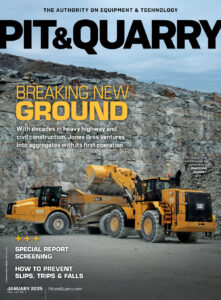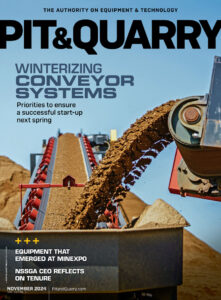Unfortunately, it is not one rule for all. In addition to the DOL’s new rule for determining if an employer-employee relationship exists, there are other rules every aggregate producer must consider.
And then there are taxes

Unfortunately, the new DOL rules create even more confusion because they are not consistent with most of the IRS’s tax regulations.
What’s worse is no one knows which rules have precedent.
As happened with the onerous new “who is and who isn’t an independent contractor” definitions in California, the DOL’s new rules will almost certainly lead to federal lawsuits that will delay and further complicate compliance. In the meantime, consider the IRS’s definitions.
The IRS and the DOL define the term “employ” differently. Under the FLSA administered by the DOL, “employ” is defined as “to suffer or permit to work.” Opposing the DOL’s economic realities test is the IRS’s “right to control test.”
The IRS’s general rule says an individual is an independent contractor if the payer has the right to control or direct only the result of the work – not what will be done and how it will be done. In other words, someone is not an independent contractor if they perform services that can be controlled by an employer – what and how it will be done.
This applies even if the individual is given freedom of action. What matters is that the employer has the legal right to control the details of how the services are performed.
Don’t forget the states
Worker classification is obviously a complex issue.
Different definitions of who is and who isn’t an independent contractor vary among federal agencies. State laws – notably California’s controversial ABC test – further complicate the issue.
The ABC test starts with the presumption that a worker is an employee unless the hiring party can prove three items:
• A. The worker is free from the control and direction of the hiring entity in connection with the performance of the work, but under the contract for the performance of the work.
• B. The worker performs work that is outside the usual course of the hiring entity’s business.
• C. The worker is customarily engaged in an independently established trade or business.
California’s controversial and confusing ABC test – court challenges and all – is currently under consideration in several other states.
The impact
Independent contractors are usually paid on an hourly or per-project basis, and they are not entitled to health care benefits, employee retirement benefits or labor protections under laws like FSLA.
Still, the rise of the so-called “gig” economy created a class of worker that effectively works full-time for a company but is still considered an independent contractor. The DOL’s proposed rule would change that, availing these workers of benefits and labor protections under federal law.
In fact, thanks to the DOL’s new FSLA rule, millions of workers will gain employee status. For workers, the positives of being classified as an employee include better wage stability, overtime protections and the possibility of receiving benefits. It also means workers will get unemployment insurance if they lose their jobs.
The downside for those working as independent contractors is reduced flexibility in work schedules and less opportunity to work for multiple employers. Additionally, under the DOL’s new rules, many aggregate producers will likely reduce their workforce to avoid shouldering such a large added expense. Thus, many workers might find themselves out of work rather than receiving the benefits given to employees.
When it comes to crushed stone and sand and gravel businesses, some larger ones might see added expenses mounting into the millions. Small producers could end up feeling the greatest impact, especially those who’ve increased their use of independent contractors.
Mislabeling prevention
The starting point for worker classification usually begins with the contract.
Ensuring the contract provisions indicates not only the individual’s status as an independent contractor, but that the aggregate-producing company is not controlling either them or their schedule – and that they’re not hourly workers. If the determination errs on the side of an employee, that is usually the best decision.
The IRS’s Voluntary Classification Settlement Program (VCSP) provides partial relief from federal employment taxes for eligible taxpayers that agree to treat workers as employees. The VCSP provides an opportunity for pits and quarries to reclassify their workers as employees for employment tax purposes for future tax periods with partial relief from federal employment taxes.
What’s more, the business will not be liable for any interest or penalties on the VCSP payment, and it will not be audited for employment tax purposes for prior years with respect to the worker classification of the workers. Application for the VCSP uses Form 8922 (Application for Voluntary Classification Settlement Program).
Final thoughts
Although independent contractor hires significantly outpace employee hires in today’s job market, the DOL’s new rules mean small aggregate producers should reconsider their business model and shift away from a heavy reliance on independent contractors.
At the very least, the DOL’s new definition creates the need for every aggregate producer to review and document all worker relationships – perhaps with the aid of a professional – to avoid potential retroactive payroll expenses.
Mark E. Battersby is a freelance writer who specializes in taxes and finance.












